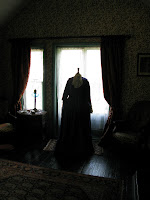It was there I discovered the 'Dystopia' exhibition at Laine's Warehouse, a vast three floor building.
Dystopia is an exhibition conceived at the same time as the author and art critic Mark Von Schlegell wrote the catalogue - novel New Dystopia.The author worked closely with the exhibition curator Alexis Vaillant on the choice of works and venues set up and design.
The Greek etymology of the word 'dystopia' can mean "a place with negative connotations".
Think Alduous Huxleys 'Brave New World' 1931 or George Orwell's, '1984' written in 1949. Ray Bradbury's 'Fahrenheit', 1953 or Andrew Stanton's Wall-e, written in 2008. These are all dystopian novels.
In setting up a parallel between the hermit crab and man,who, for their development,both require access to an ever larger habitat, the artist introduces the vacancy chain notion.
This theory of vacancy is based on the vulnerability of the human being in the face of the permanence of his environment.
This work felt so relevant, particularly now during these difficult financial times. As I listened to Radio 4 this week and heard that there is no country in the world concerned with the Climate Crisis since the Credit Crisis eventuated.
The feeling of desolation within these installations was to me, a stark reminder of what could be a global dystopia.
Other works exhibited in Dystopia :
 |
| Sabastian Hammwohner |

 |
| Peter Coffin |




















